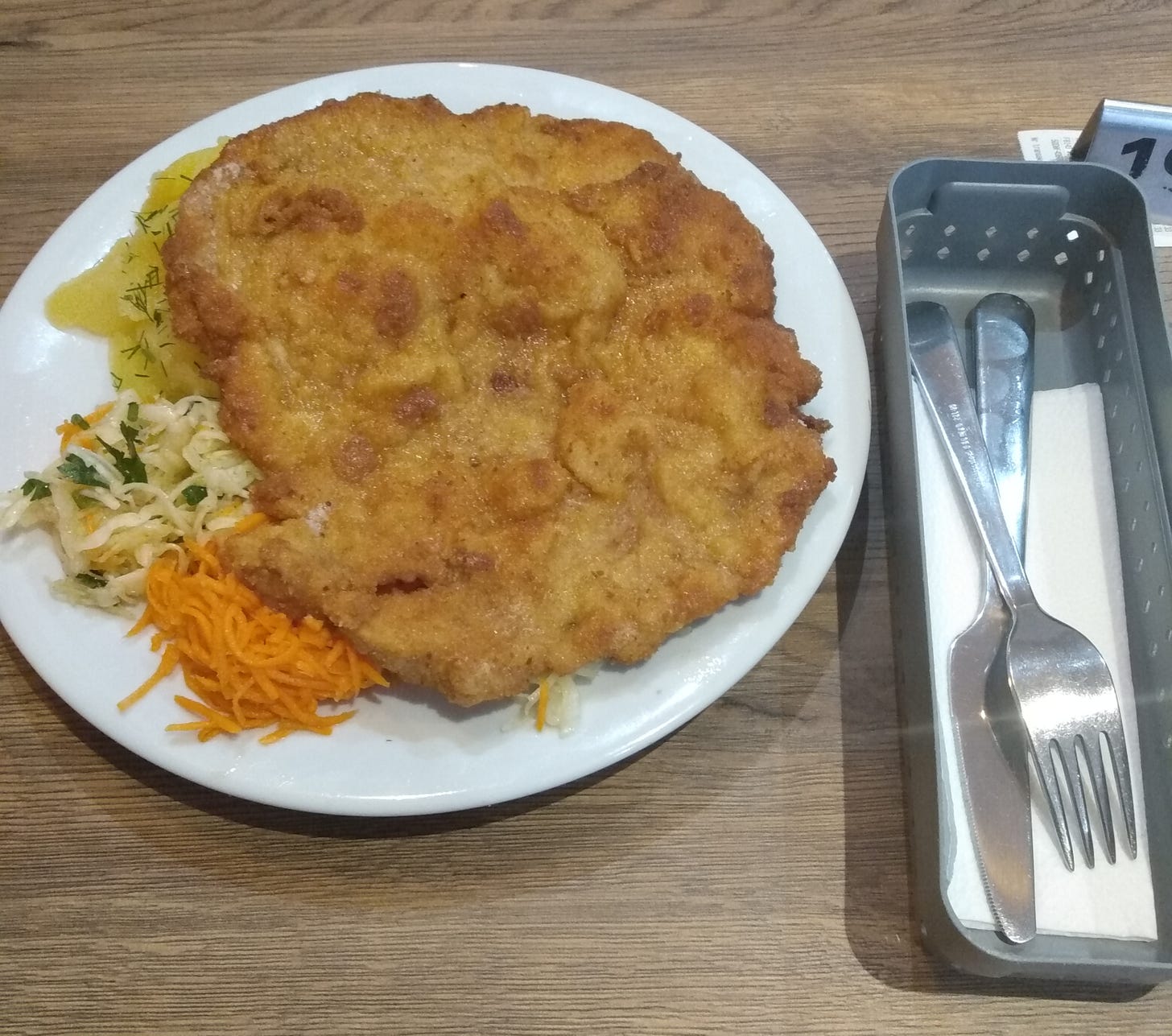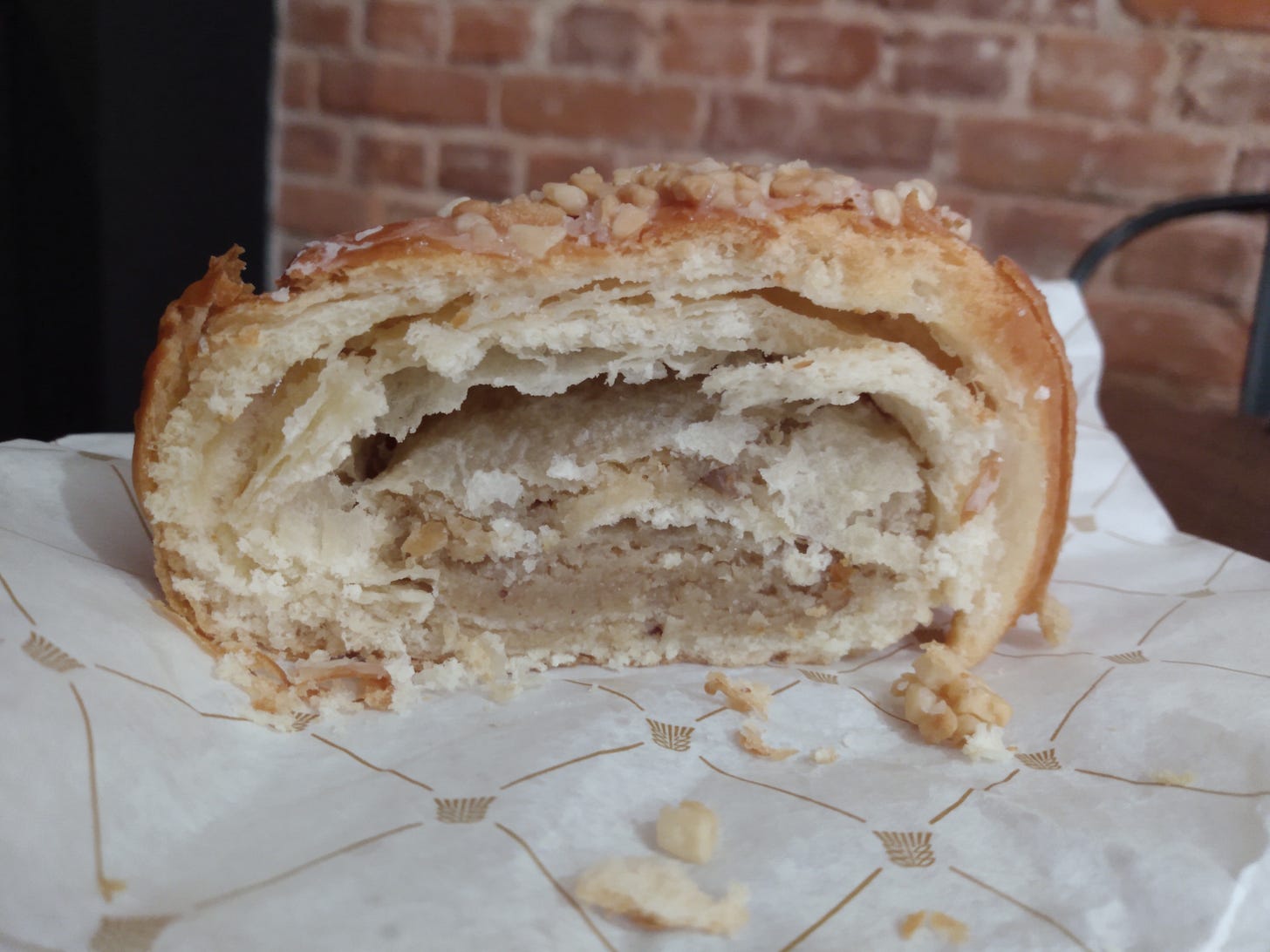All Over the Place: The Good, the Bad and the Tasty
Issue 34: Schabowy, czernina and rogal świętomarciński
One of the fun things of living overseas is enjoying the local cuisine. And on a day trip to the city of Poznań, I encountered a familiar favorite, a dubious soup, and a delectable pastry.
I found myself hungry after a visit to the National Museum in Poznań, which is currently showing an exhibition on the lovely painter Józef Chełmoński.
So I headed to a nearby milk bar. Milk bars are a rough Polish equivalent to the American diner, with a focus on affordable, tasty food over service or sophistication. I had the schabowy po staropolsku meal, which was schnitzel with mashed potatoes and surówka (shredded carrots and other vegetables similar to coleslaw but better). It was more expensive than many milk bars, but it was in a prime location and was a bit more upscale than most - after ordering at the counter they brought the food out to you instead of you walking back when it’s ready.
From there I went to the Croissant Museum. While it’s technically not a museum given a lack of artifacts or displays, it does offer an entertaining show where visitors can learn about the rogal świętomarciński (spelled like it sounds), or St. Martin’s croissant.
The ‘rogal świętomarciński’ is crescent-shaped, coated with icing and sprinkled with chopped nuts. Its cross-section is oval. It weighs between 150 and 250 g. Its surface colour varies from dark golden to light brown. The dough has a cream colour and the filling is creamy brown – varying from pale to dark creamy brown. The baked dough is of elastic consistency and flaky, and presents a porous cross-section, with visible layers. Closer to the middle, rolls of dough are interspersed with a poppy-seed filling. At its centre, the pastry is filled with a poppy-seed filling which is moist to the touch. The characteristic taste and smell – sweet and with a slight almond taste – derive from the ingredients it contains: the yeast dough and the poppy-seed filling.
This isn’t from a tourism brochure. It’s a law, listed by the Commission Implementing Regulation (EU) No. 597/2013 of 19 June 2013, Annex II, 3.2. In order for someone to sell a product and call it a St. Martin’s croissant (or a rogal świętomarciński, whichever you prefer) it must be made in the Poznań area and meet specific criteria. In Europe, they’re serious about counteracting counterfeit croissants.
At the end of the show you get a St. Martin’s croissant, but I saved mine for later because I had something more important to eat. (Note that I said “more important” and not “tastier.”) On my way from the National Museum to the Croissant Museum, I saw an item on a menu that has been in the back of my mind for a long time: czernina, or duck blood soup.
If you think that duck blood soup is unappetizing, so did my grandmother, who spoke of having to eat it during the Great Depression. I had looked a few times for czernina the last time I was in Poland, but it’s hard to find and nothing came of it. With my current time in Poland approaching the end, I knew I would have to make an effort to try and find it before I left. Or I could just see it on a menu I glanced at. Go figure.
In what was definitely not a shock, duck blood soup is not on my list of culinary delights. It’s a thin soup with a slightly sour flavor and little bits of…something at the bottom, under the noodles and small pieces of meat. I ordered it, I ate it, and I don’t plan on ordering it again. But I had it, and I’m happy about that. Later I had the croissant, and I was also happy about that, albeit for different reasons.






